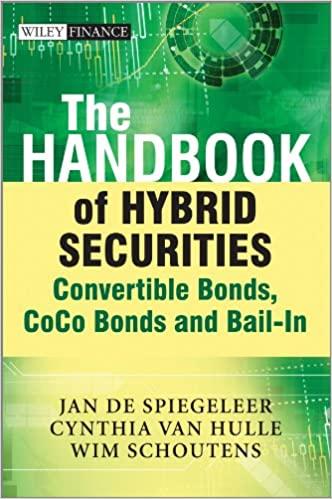Question
1.) Sany is thinking of selling an old machine and buying a new, higher capacity machine. It purchased the old machine for $1,000,000 three years
1.) Sany is thinking of selling an old machine and buying a new, higher capacity machine. It purchased the old machine for $1,000,000 three years ago and depreciated it using simplified straight-line depreciation method. The life of the machine was estimated as 5 years. If Sany can sell the machine for $200,000 today, what is the tax implication from the sale of this old asset? Assume that the tax rate is 40%. Round to the nearest penny. If tax liabilities, type a negative sign in front. Do not include a dollar sign in your answer. (i.e. If your answer is tax liabilites of $8,765,43, type -8765.43; if tax shield of $8,765.43, type 8765.43).
2.) A firm has a machine it can sell for $50,000. The book value of the machine is $20,000 at the moment. If the firm sells the machine today, what is the tax implication from the sale of the machine? Assume that the tax rate is 40%. Round to the nearest penny. If tax liabilities, type a negative sign in front. Do not include a dollar sign in your answer. (i.e. If your answer is tax liabilites of $8,765,43, type -8765.43; if tax shield of $8,765.43, type 8765.43).
3.) ABC Company is considering whether a project requiring the purchase of new equipment worth investing. The firm spent $20,000 three months ago to conduct market study. The cost of a new machine is $160,000, and the firm has to spend additional $10,000 to get it shipped and installed. This project will increase annual revenues by $225,000 and annual costs by $45,000. If the firm undertakes this project, $50,000 in net working capital investment is required. What is the initial outlay of this project? Round to the nearest penny. Do not include a dollar sign in your answer. Type the absolute value of the answer. (i.e. If your answer is -$20,000 since it is cost to replace, type 20000 as your answer.)
4.) The cost of new machine is $220,000. The cost of shipping is $10,000 and of installation is $20,000. The required working capital is $25,000. Using the 3-year MACRS schedule, determine the depreciation expense in year 1. Round to the nearest penny. Do not include a dollar sign.
| Year | 3-YR MACRS |
|---|---|
| 1 | 33.33% |
| 2 | 44.45% |
| 3 | 14.81% |
| 4 | 7.41% |
Step by Step Solution
There are 3 Steps involved in it
Step: 1

Get Instant Access to Expert-Tailored Solutions
See step-by-step solutions with expert insights and AI powered tools for academic success
Step: 2

Step: 3

Ace Your Homework with AI
Get the answers you need in no time with our AI-driven, step-by-step assistance
Get Started


